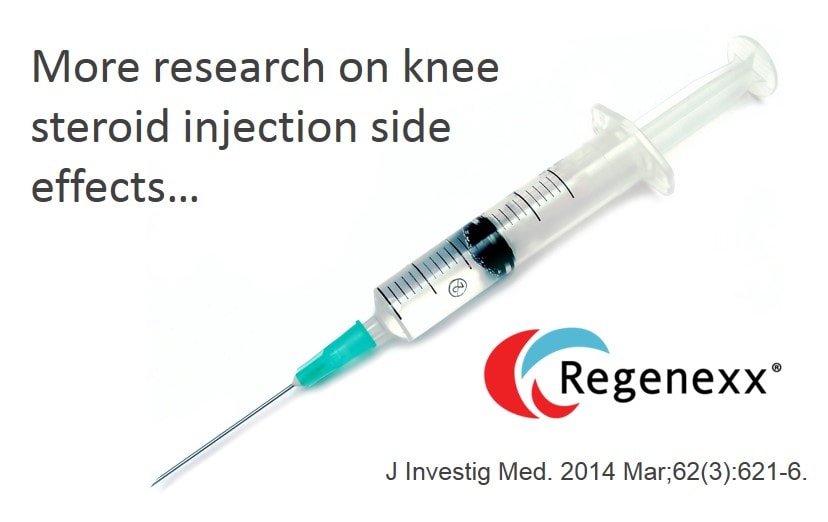Steroid anti-inflammatories are powerful drugs at suppressing swelling. They are very commonly injected into joints that have arthritis and they generally work for a few weeks to months to relieve pain. However, is this a good idea? Many recent studies would argue that this is a really bad practice that should be stopped.
There are two kinds of steroids-bodybuilding type anabolic steroids like testosterone, and corticosteroids which are anti-inflammatories. The body produces and uses very, very tiny amounts of corticosteroid; about 1,000,000 times less than the amounts commonly used for injection. Why do doctors inject such high doses if the body uses such minute doses? The answer is simply medical tradition that isn’t based in any science. When these drugs first came into widespread use in the 1960s, they were used to treat serious life threatening disease and the milligram doses that are currently used were easy to manufacture and seemed to work for these very severe diseases. Doctors then began noticing that they also worked if they were injected into knees. However, Joe Namath of the NY jets became a cautionary tale of the woes of cumulative knee steroid injection side effects, as his frequent injections basically destroyed his knees.
There are a number of recent studies that discuss that injecting steroids into joints and the epidural space (around the spine) is a bad idea. For example, one recent study demonstrated that the common practice of injecting steroids with anesthetic was a toxic one-two punch, as the two together caused more tissue damage than either alone. A more recent study demonstrated that bone loss in middle aged and older women was dramatically accelerated by epidural steroid injections for sciatica, increasing their fracture risk by a staggering 29% with each shot. Finally, other studies have shown that these shots mess with the hormonal control systems in the body.
The new study looked at twenty patients who had either steroids or knee lubricating gel (hyaluronic acid or HA) injected into both knees and then were given a hormone stimulation test. A scary 60% of the knee steroid injection group had evidence of adrenal insufficiency versus 15% of the knee HA patients. Some patients in the steroid group still had adrenal problems two months after the injections! Adrenal insufficiency is a disease where the little glands on top of the kidneys don’t produce enough steroid hormones and can be associated with severe muscle weakness and fatigue, depression, extremely low blood pressure (hypotension), weight loss, kidney failure, and changes in mood and personality.
The upshot? Knee steroid injection side effects and steroid injections in general are bad news. It’s unknown, given the mounting evidence of harm to patients why many physicians are still injecting steroids into the joints and spines of patients.
Original post seen here: http://www.regenexx.com/2014/09/why-are-we-still-injecting-steroids-into-knees-and-spines/

